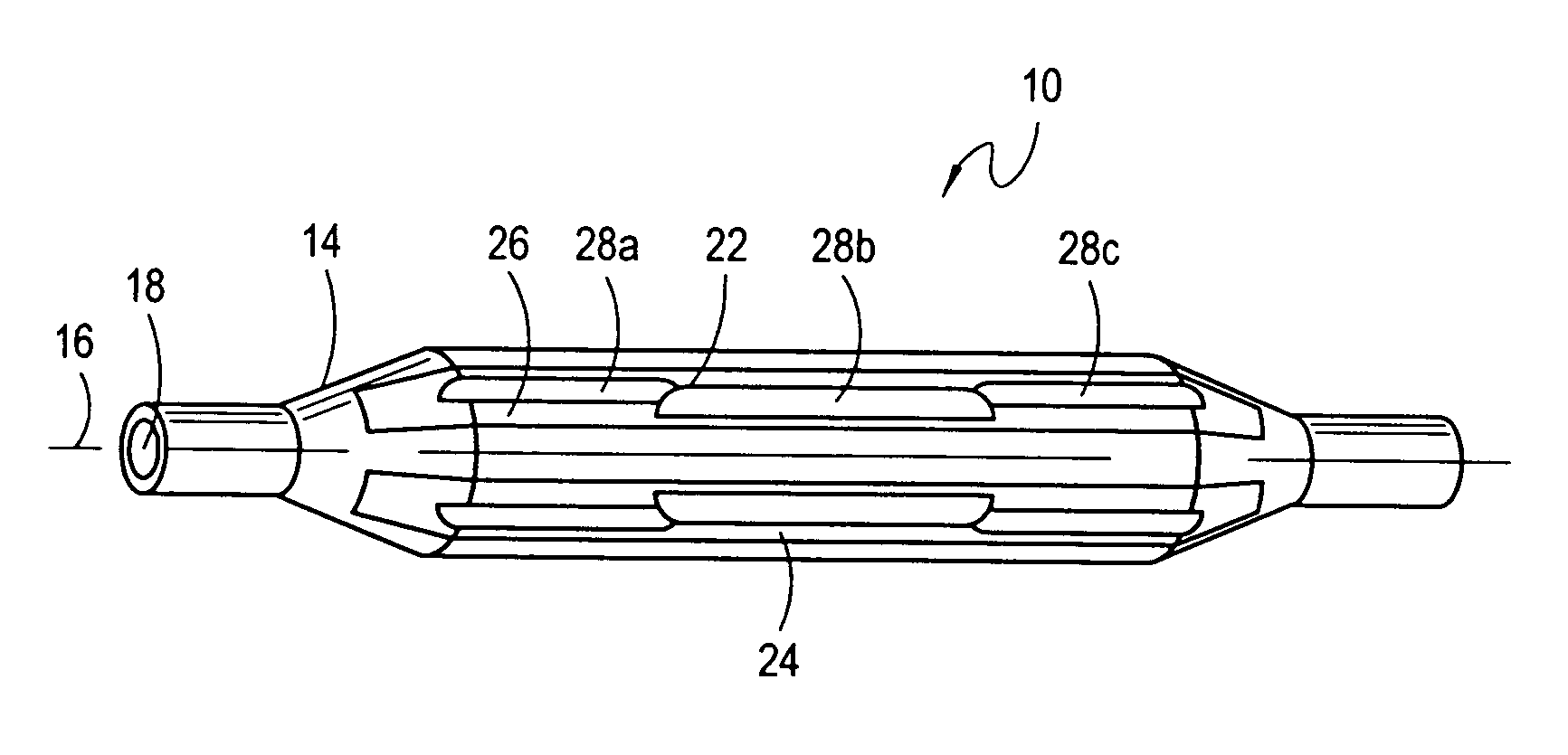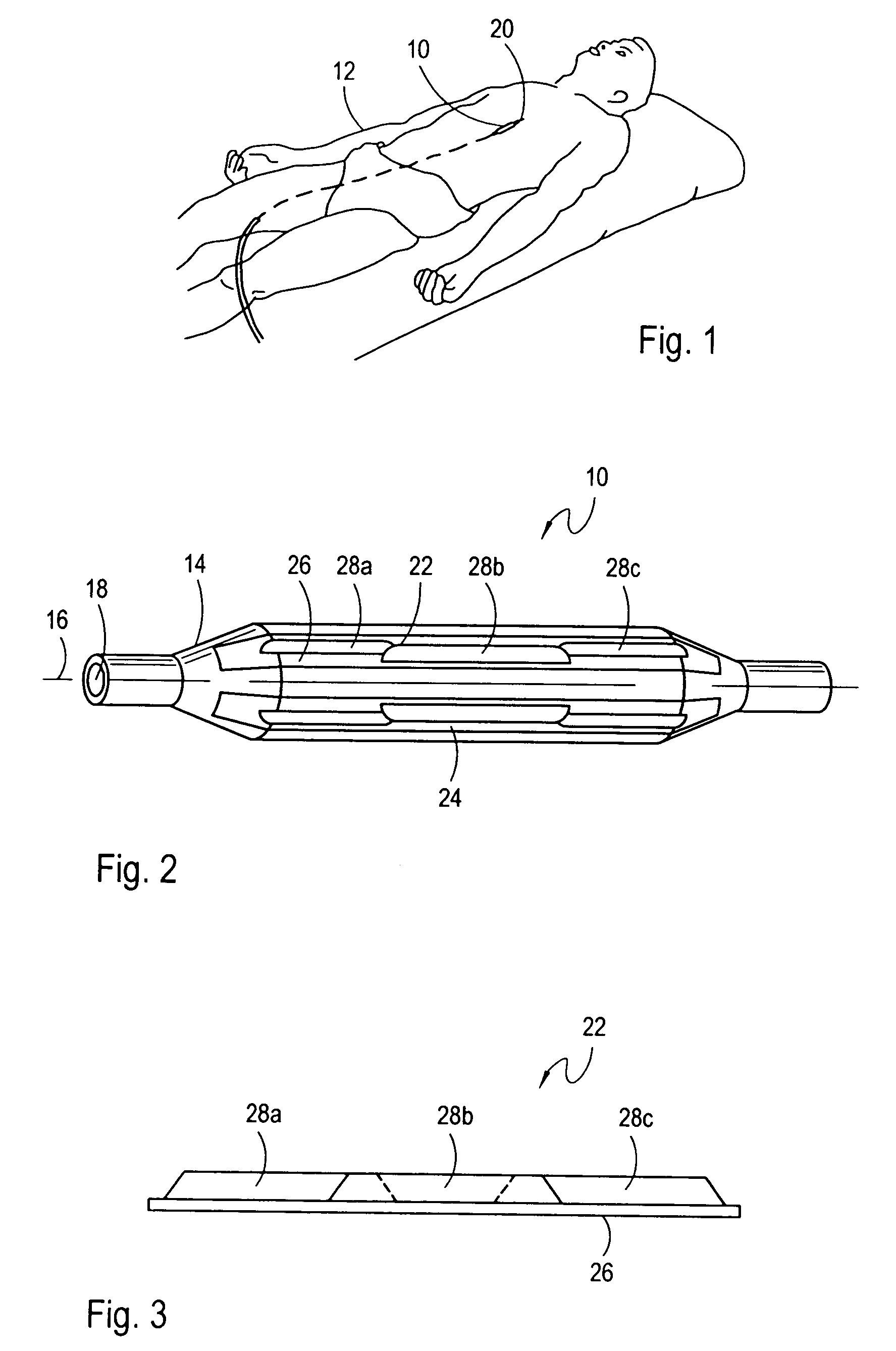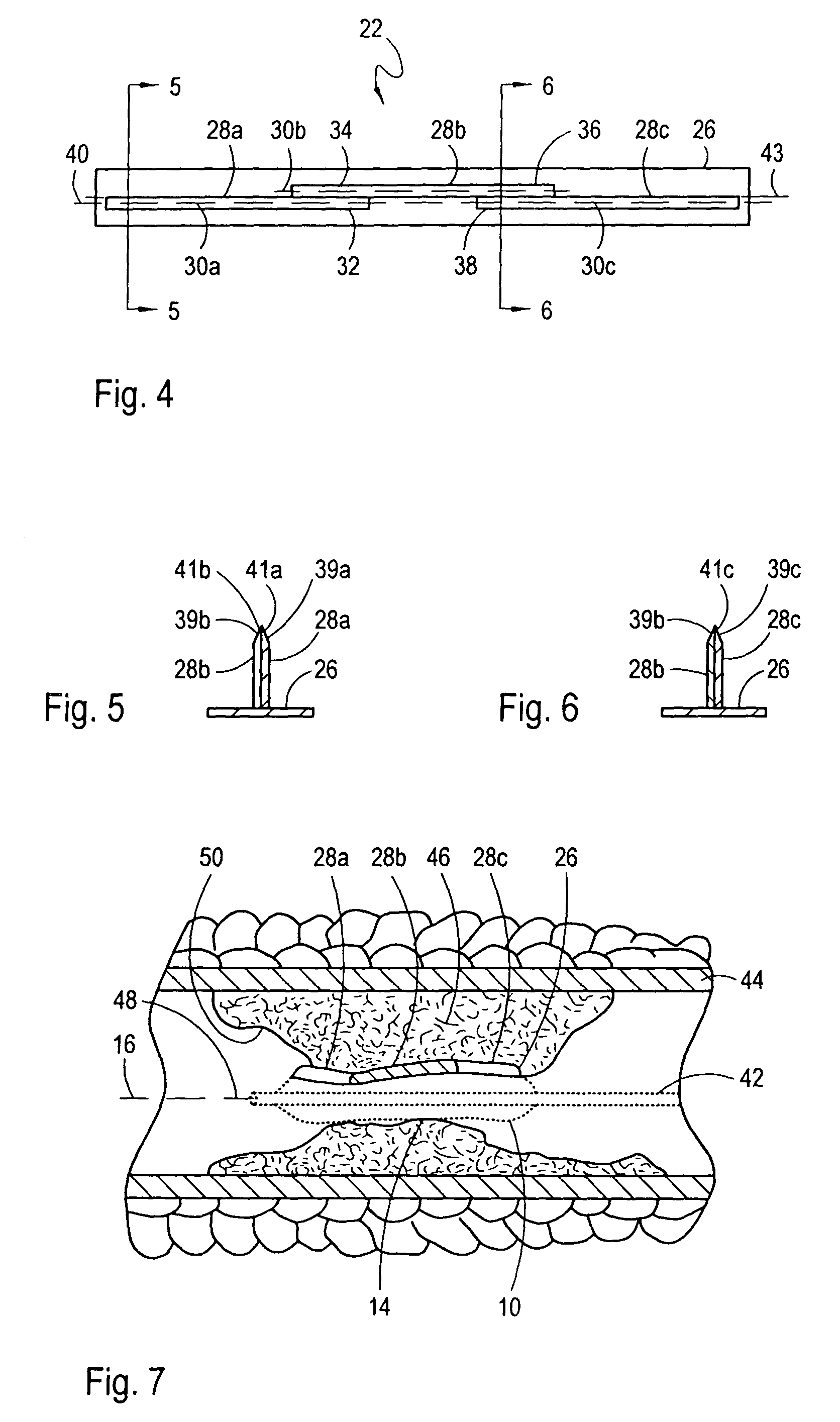Segmented balloon catheter blade
a catheter blade and segmental technology, applied in the field of medical devices, can solve problems such as partial, or even complete, blockage of the artery, damage to the tissue that relies on the blood supply, and heart attack
- Summary
- Abstract
- Description
- Claims
- Application Information
AI Technical Summary
Benefits of technology
Problems solved by technology
Method used
Image
Examples
Embodiment Construction
[0022]Referring initially to FIG. 1, a device 10 for incising and dilating a stenosis is shown positioned for operation inside a patient 12. As shown in FIG. 2, the device 10 includes an angioplasty balloon 14 that is elongated and defines a balloon axis 16. As shown, lumen 18 is provided to allow the balloon 14 to be tracked along a guidewire 20 (shown in FIG. 1) and to allow for inflation / deflation of the balloon 14. For the present invention, one or more blade units such as blade unit 22 and blade unit 24 are mounted on the external surface of the angioplasty balloon 14.
[0023]Referring now with cross reference to FIGS. 2, 3 and 4, it is to be appreciated that the blade unit 22 includes a base member 26 and a plurality of blade segments 28a, 28b and 28c. Although only three blade segments 28a, 28b, 28c are shown, it is to be appreciated that a blade unit 22 can contain any number of blade segments 28a, 28b, 28c for the present invention. Preferably, each blade segment 28a, 28b, 28...
PUM
 Login to View More
Login to View More Abstract
Description
Claims
Application Information
 Login to View More
Login to View More - R&D
- Intellectual Property
- Life Sciences
- Materials
- Tech Scout
- Unparalleled Data Quality
- Higher Quality Content
- 60% Fewer Hallucinations
Browse by: Latest US Patents, China's latest patents, Technical Efficacy Thesaurus, Application Domain, Technology Topic, Popular Technical Reports.
© 2025 PatSnap. All rights reserved.Legal|Privacy policy|Modern Slavery Act Transparency Statement|Sitemap|About US| Contact US: help@patsnap.com



